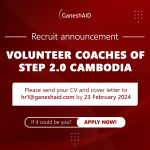Lifelong learning has become an imperative in the twenty‐first century to keep pace with the industry’s demands of work and the knowledge economy. Today’s healthcare workers are full-time professionals, part-time students, and lifelong learners. They are adult learners who are time constraint due to competing obligations related to work, family, and education.
The Unique Characteristics of the Healthcare Professionals Education
Despite declining cognitive abilities and increasing workload, adult learners are self-directed and internally motivated learners, who value application of content and have a high degree of readiness. Compared to younger learners, they are more likely to reflect on why they should obtain certain knowledge¹. Understanding adult learners’ characteristics is critical for healthcare professional programs in terms of designing a unified, evidence-based approach.
User Engagement (UE) in the Context of Mobile App Learning
Rapid developments in mobile technology have increased the viability of mobile devices as a medium for further education, especially for healthcare workers who are constantly occupied with different responsibilities. There is little evidence on how adult students engage with these platforms and how we, as instructional designers, can motivate learners to make the most out of their learning experience.
Cognitive engagement is perhaps the most critical part of overall learning engagement. Effective cognitive engagement enables learners to immerse themselves in in-depth reflective learning processes².
Fostering User Cognitive Engagement in Mobile App Learning
At GaneshAID, we ensure meaningful mobile learning for healthcare workers by drawing strategies from psychological principles that focus on important adult cognition theories. Specifically, our approach employs the Self-determination theory, a theory of human motivation and personality which suggests that people become self-determined when their needs for competence, relatedness, and autonomy are fulfilled³.
Quality of Instruction and Curriculum
To achieve high quality of instruction and curriculum, effective planning and organization of content is crucial. Clear mapping of course objectives conveys to students that learning objectives are being met as a result of particular content. This is critical to an adult learner who is interested in how course content fits into their individual learning plan. This approach reinforces the competence component of self-determination theory. Feelings of competence are stronger when the demands of a task are optimally matched to a person’s skills.
Relevance and Pragmatism
The adult learner has a wealth of knowledge from prior experiences, and is ready and eager to learn. Therefore, the key to promote their engagement is to foster learning experiences that are relevant and applicable to their needs. In other words, we need to demonstrate the connection between the course and learners’ own interests. Putting problem solving and critical thinking components into “bite-size chunks” allows adult learners to understand the relevance of course materials to their lives and their respective fields in a limited time frame. To the adult learner, this technique verifies the authenticity of course content, and ultimately make the learner feel a sense of mastery over their own process.
GaneshAID developed a competency-based learning solution using different learning pathways to emphasize the relevance portion of the course to the health workers’ specific position.
Assessment and Timely Feedback
Adult learners are motivated when learning activities and assessment tasks are structured and sequenced in a way that provides clarity about requirements and types of feedback. Psychologically, it is a well-established phenomenon that timely feedback furthers adult learning and “the more immediate and precise the feedback is, the stronger the effect on learning”. A variety of assessments, especially those that challenge students at high learning levels, along with constructive feedback allow learners to be judges of their own academic progress and achievement. Feedback arouses motivation that consequently triggers improvement of performance, leading to the evocation of another set of feedback. In this way, the process will continue cyclically. The cycle of feedback targets the autonomy component of the theory. Students experience autonomy when they feel supported to explore, take initiative, develop and implement solutions for their problems.
One of GaneshAID’s hallmark of success, Coach2PEV, highlights supportive supervision as core of performance coaching. In this application, supervisee will complete the courses and relevant professional tasks under the remote, guideline from a virtually connected supervisor.
User Sociability
Relatedness involves feelings of closeness and sense of belonging to a social group. Without connections, self-determination is harder to achieve because the individual would lack access to both help and support. To foster this component, the mobile learning app should have the ability to share, communicate, comment, and meet others with similar interests to increase engagement with the app. Feelings of relatedness are enhanced when individuals are part of an inclusive environment.
With GaneshAID’s learning solution, learners can share or update their progress as positive competition in the professional community. Peer learning and co-active, which is also known as learning in concurrence, is intensified as health workers can connect with their colleagues and supervisors at any time upon encountering a problem.
Fostering a sense of self-determination is one of the many things that can inspire certain individuals to excel. At GaneshAID, we develop all Capacity Building and Learning products taking into account all relevant psychological principles. Read more about our innovative training solutions:
What do you think about utilizing psychological components in instructional design? Have you ever used any apps that foster all the above factors? Please share with us what you think about this approach in the comment section below.
Sources:
(1) Physical and cognitive development in middle adulthood, Hoffnung M.
(2) Learning as an Adult and Cognitive factors in Learning, Fredrick D. Pociask
(3) Self-Determination Theory and Motivation, Gabriel Lopez-Garrido

